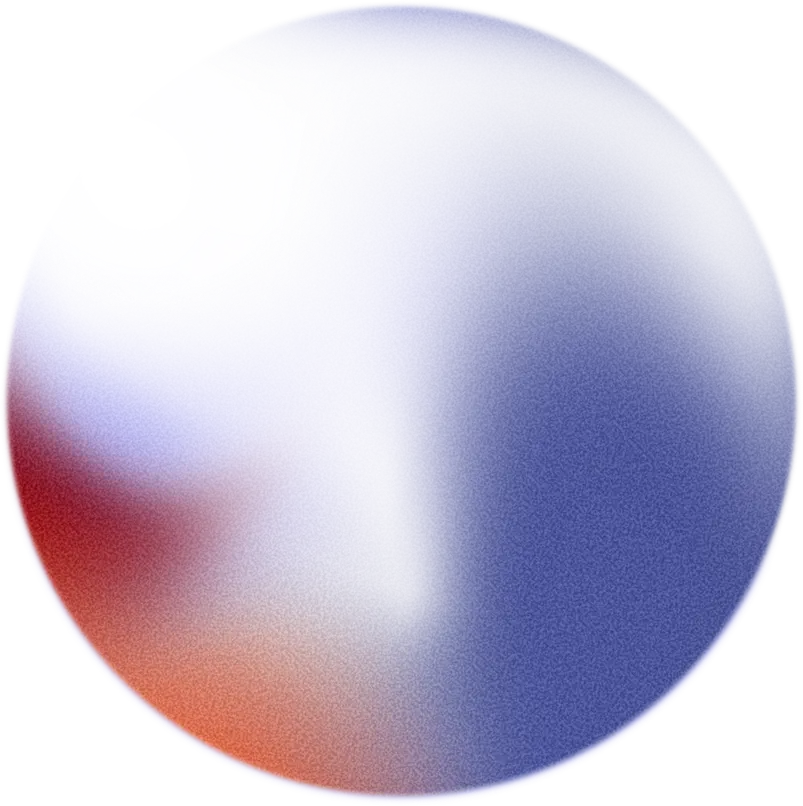
A powerful ally at your service
And a leading force in biotechnology.

Protein Engineering, Expression & Purification
Protein engineering stands at the forefront of modern biotechnology, enabling the design, modification, and optimization of proteins for a wide range of applications spanning from therapeutics to industrial processes. At the heart of this field lies a diverse array of innovative technologies and methodologies to manipulate protein structure and function to achieve desired outcomes.
• Rational Design: Utilizing computational algorithms and structural biology insights, rational design allows us the precise modification of protein sequences to enhance stability, specificity, and activity.
• Protein Modification: Biological methods such as site-directed mutagenesis, post-translational modifications, and domain conjugation enable the introduction of specific modifications into protein structures, expanding their functionality and applicability.
• Computational Modelling: Molecular modelling and simulation techniques allow for the prediction of protein structures, dynamics, and interactions, guiding rational design efforts and providing insights into protein behaviour under varying conditions.
Upstream Process Development
Upstream services play a pivotal role in the production of therapeutic proteins, diagnostic enzymes, and other biopharmaceuticals. Our company specializes in offering comprehensive upstream services with 20 years of expertise in various expression systems:
Bacterial Expression, Yeast Expression, Insect Cell Expression, Mammalian Cell Expression
Using cutting-edge technologies and our commitment to reach the highest quality possible, we empower biotechnology advancements and contribute to the successful translation of innovative therapies.
Downstream Process Development
Downstream processes can be a bottleneck in production of therapeutic proteins, vaccines and diagnostic enzymes, making it critical to purify proteins with the utmost precision and efficiency.
Protein Stability Testing and Optimization
Stability is a key characteristic of proteins. Prediction tools can be based on primary structure (amino acid sequences), physicochemical properties, interactions stabilizing tertiary/quaternary structure of proteins, and descriptors of the protein surface. Available In silico tools were originally developed to predict the effect of polymorphisms and mutations. However, in the era of protein engineering, stability prediction is a powerful tool.
Testing protein stability is usually based on determining melting temperature (Tm). TargetEx utilizes various sophisticated protein analytics methods to do comparative analysis based on the denaturation profile of proteins (e.g. differential scanning calorimetry (DSC), differential scanning fluorimetry (DSF)). Measurement of protein activity complements instrumental methods.
Buffers may also profoundly affect protein stability. pH, reducing agents, and co-solvents (e.g. glycerol) among others are important determinants of the stability and activity of proteins. Optimization of protein stability, thus, focuses on buffer components. Cellular stability is also affected by proteolysis which translates into low yield.
Through our comprehensive approach, TargetEx empowers our clients to accelerate the drug discovery process, optimize lead compounds, and advance promising candidates towards clinical development, ultimately contributing to the development of innovative therapeutics and improving patient outcomes.
Proteins or protein fragments for structural studies
During our design process, we use bioinformatics solutions to determine the non-structured regions, possible disulfide bridges, transmembrane domains and domain borders. TargetEx provides protein expression with appropriate expression systems (E. coli, yeast, insect (Sf9 or Hi5) and mammalian cells) to produce the protein with proper folding and structure for structural studies. We also use biophysical methods, like CD spectroscopy or DSC/DSF to determine the proper folding of the domain/protein and in most cases, we perform biological activity measurement. Of course, sequencing of the expression vector and LC-MS identification of the purified protein is also part of our workflow.
Assay development and screening
TargetEx offers a new target enzyme expression system for assay development and biological hit validation for emerging targets. Screening services include fragment based, biochemical and cellular assays. MT and HT assays are conducted in 96-well and 384-well plate formats. Plate handling is fully robotized using cutting edge liquid handling devices and integrated readers. Assay read-outs include fluorescence, luminescence, absorbance, and radioactivity. We can measure the test articles of our partners or we can select and order compounds from public libraries. We also offer a hit validation service by confirming the hits just like an independent external lab. This service is extremely useful before further investments in drug discovery, as only high potential targets are selected for further development stages.
Compound selection using chemoinformatic methods
Target-focused compound libraries are designed to interact with an individual protein target or target-families and selected around particular hit compounds. Structure and ligand-based chemoinformatic methods (2D/3D similarity search, diversity and property-based filtering, bioisosteric replacements, 3D pharmacophore model building and docking) are applied for client-protected virtual screening from public multi-million small molecules repositories.
Fragment-based drug discovery
Fragments are small molecules typically with a molecular mass between 150–250 Da that bind to certain pockets of a particular binding site. Fragment hits are weak binders therefore non-conventional procedures such as thermal shift assays (DSF: differential scanning fluorimetry) are required to identify them. Bioactive fragment hits could be optimized by fragment merging, linking, or growing by 2D/3D chemoinformatic methods that could lead to potential drug-like candidates.
Purity, identity and functionality
Functionality is the most important issue regarding protein production and purification. We have great experience in establishing the required protein activity assay to test functionality in most cases. Our functionality assay skills involve numerous protein classes (kinases, proteases, oxidases, GPCRs, polymerases, reverse transcriptases, etc.). These measurements are usually followed by optical readout, as well as characterization of protein-protein interactions. Determination of inhibition parameters by biochemical/cell-based assays of well-known inhibitors is also among the range of services our clients prefer.
The proteins prepared and purified by us are characterized according to the task currently bespoken. We perform sequencing of the prepared expression vector even in cases where a synthetic gene is just transferred into an expression vector. The purified protein is also identified by immunoblotting, or detection can be performed via fusion tags. On request, we can also perform an LC-MS/MS measurement to ensure that the final result matches the expectations. In case the aggregation properties of molecules are informative to our client we can perform SEC-HPLC to determine them.
Our goal is to produce the protein in the form preferred by the customer (e.g.: monomer/multimer). Our test methods are suitable for testing materials that stabilize the preferred form.
Protein purity is NOT just a band on SDS-PAGE gel!
We have developed specific assays to measure total DNA content, RNase content, DNase content, host cell DNA amount or residual protease contamination.
Endotoxin content monitoring might be a useful parameter for some projects. We have developed a custom assay to precisely follow endotoxin amounts over protein production. Low endotoxin expression and fully endotoxin less expression and production are also techniques we are able to execute on request.
Biophysical characterization
The proper characterization of recombinant proteins is essential. Although a protein may appear as one band on SDS-PAGE, you have to keep in mind that it is the size distribution of the unfolded protein.
The native conformation of the protein can be analyzed using circular dichroism spectroscopy where you can calculate the full distribution of the secondary structure elements and compare it to the predicted values.
A second measure of protein quality is unfolding of the native structure. We offer two methods: Differential Scanning Fluorimetry (DSF) and chemical agent induced unfolding. The former will give you the data on protein unfolding temperature and the cooperativity of folding. The method makes use of the environmental sensitivity of the external protein binding fluorophore, Sypro Orange.
Chemical agent induced unfolding is the other method to test protein stability. In this measurement a concentration range of urea or guanidine hydrochloride is used as the denaturing agent, and an internal property of the protein (CD spectrum or fluorescence spectrum) acts as a standard to determine the ratio of folded to unfolded species. This equilibrium unfolding measurement is especially useful for determining the effect of point mutations or truncations on the protein structure over the entire temperature range of interest.
The benefits of working with TargetEx:

Reliability
Working responsibly, accurately, and efficiently is fundamental to building and maintaining trust—both with our partners and within our team.
This commitment ensures strong, reliable relationships and drives the consistent delivery of high-quality results that everyone involved can depend on.

Agility
A constructive attitude, flexibility, and initiative are essential ingredients for success.
By staying adaptable, we are always prepared to meet our partners' evolving needs and provide bespoke solutions that ensure lasting results.

Sophistication
We approach everything we do with a refined attention to detail, evolving alongside scientific advancements and embracing complexity with skill and precision.
Our commitment is to continually advance, operating with finesse and expertise.
Our roadmap to collaboration
01Contact us
Contact us via phone, email or by filling out our contact form. We will respond within 48 hours and then fix an appointment for a personal discussion. We are happy to sign an NDA if needed to facilitate open conversations.
02Planning
After thoroughly evaluating and discussing your specific needs, we provide a detailed and easy-to-understand project plan and custom offer with major milestones, exact deadlines and prices.
03Agreement
If you find our offer acceptable, we will finalise our basis of agreement (purchase order, contract, service agreement, depending on your needs) and create the project starting document. There is nothing left but to sign our custom contract.
04Execution
During our project execution we pay particular attention to informing our clients every step of the way. With regular insights and consultations, you can ensure your project is going in the desired direction.
05Completion
By following the steps above, we are proud of having numerous satisfied customers with countless successful projects closed. Around project closure, we always provide professional suggestions, potential new angles regarding future plans. In most cases our partners wish to continue certain projects with us.

Protein engineering at TargetEx is driven by cutting-edge technologies that enable the design, modification, and optimisation of proteins for diverse applications, including therapeutics, diagnostics, and industrial processes.
Our approach integrates rational design, allowing us to fine-tune protein characteristics such as stability, activity, specificity, and solubility. These methods are essential for developing tailored enzymes, therapeutic proteins, and biologics that meet the precise demands of our clients. Our engineering process begins with in silico design, incorporating computational tools to predict optimal mutations or structural alterations.
Recombinant DNA technology is a fundamental technique used to create expression vectors for producing various recombinant proteins, such as drug targets, biotherapeutics, and subunit vaccines.
We maximise protein expression levels in the chosen host organism by utilising codon optimisation during the design process. Our expertise includes a wide array of promoters, signal sequences, fusion tags, and identifier tags, which we strategically combine to meet the specific objectives of our clients.
Recovering a protein's active conformation post-expression is a significant challenge.
At TargetEx, we have years of expertise in handling "troublesome" proteins. The key to success is selecting the optimal expression system and designing the appropriate expression construct. Our state-of-the-art molecular biology laboratory is fully equipped for recombinant protein production, featuring bacterial and yeast expression systems and dedicated mammalian and insect cell culture labs to ensure high-quality results.
Protein purification is core expertise at TargetEx, where we have successfully purified a wide range of proteins for various applications, including R&D, X-ray or NMR studies, vaccines, biosimilars, diagnostic enzymes and in-house projects.
We offer purification services for both affinity-tagged and non-tagged native proteins, from small-scale to larger laboratory-scale expressions. Our purification process development, capable of producing up to 1 gram of protein, is designed to meet the highest quality standards and is scalable to meet any client demand. Additionally, we offer purification for both process- and product-related impurities.
Developing an effective downstream process can be time-consuming and resource-intensive due to the numerous optimisation steps involved.
At TargetEx, we accelerate this process by leveraging a wide range of bioinformatics tools to predict downstream behaviour before conducting lab experiments. This approach provides us with valuable insights on where to begin and how to efficiently separate the target protein from impurities, streamlining the entire process.
Computer-aided drug design (CADD) approaches complement the in vitro/in vivo biological screening technologies to facilitate the discovery process, reducing time and effort and increasing the success rate. Analysis of the biologically active chemical space and prediction of the pharmaceutically relevant properties enable efficient ligand-based –and protein-target-based virtual screening approaches. As a result of the virtual screening process, target-focused libraries are generated.

Our values make us stand out in the crowd
And our persistence creates outstanding achievements.